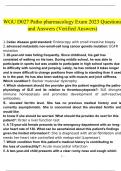College aantekeningen
College-aantekeningen Toetsdeel 2 Nederlandse Politiek En Kwalitatieve Methoden (2022)
- Instelling
- Vrije Universiteit Amsterdam (VU)
Met dit 2e deel voor toets 2 komt u goed voor de dag en slaagt u zeker weten voor het vak.
[Meer zien]













